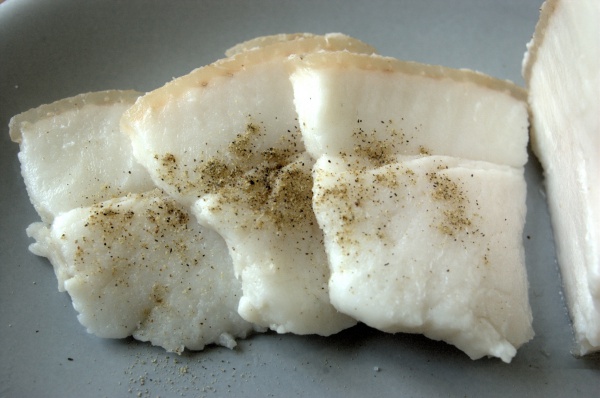Facts About Salo
Salo is a cherished traditional food in Slavic countries, made from cured slabs of fatback, occasionally with the skin still attached. Each region has its own variation of this dish. For example, East Slavic salo might be seasoned with paprika and other spices, while the South Slavic version is often smoked to enhance its flavor.
Although "salo" is sometimes translated to "bacon" or "lard" in English, it is quite different from both. Unlike lard, salo is not rendered, and in contrast to bacon, it contains little to no lean meat. Salo is more akin to Italian lardo but differs in thickness and seasoning. To preserve salo, it is salted, smoked, and aged in a dark, cold place, allowing it to last up to a year or more. Even if it spoils, it can still be useful for treating leather or as fishing bait.
There are numerous ways to enjoy salo. It can be consumed raw, cooked, fried, chopped with garlic for borscht, added to sausages, or simply served as a savory snack with vodka or horilka. Frying salo renders fat for cooking, and the crispy bits left behind make a delicious condiment or snack. Even the leftover pork skin can be used to make a rich stock for soups.
There's also a humorous cultural reference to "chocolate-coated salo" a quirky combination that's become a light-hearted joke among Eastern Slavs. Capitalizing on this, the Odessa Confectionery Factory once created a candy called "Salo v Shokoladi" as an April Fool's Day prank. This confection features caramel with a hint of rendered fat, offering a unique salty-sweet flavor.

 Belarus
Belarus